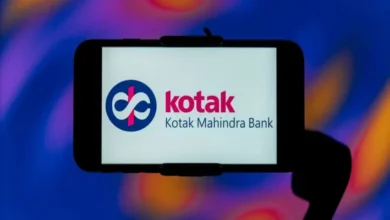China is a country in eastern Asia, officially the People’s Republic of China. It is the most populous country in the world with around 1.4 billion inhabitants in 2019. This seems to be interesting that, given the fact that China has a greater population than India, it has continuously succeeded in getting people out of poverty. Before saying #boycott china, it is important to understand the Chinese secret to success.
If we talk about China’s prosperity, it doesn’t, mean they ‘re better off than India or Indian development is being undermined, but China and Indian are geographically very close. If we look at the reasons behind the success of China, the only target is to know what they are doing well and to add it to the list of our achievements.

Those who want ideas on how to make our country, “ATMA NIRBHAR” will benefit from this. In 1947 India achieved independence and in 1949 China was liberated.
After that, for 30 years they were at the same point in all figures on the economy, so what changed then in 1980?
China started to become a world factory, it began to focus on its economy and much more on human resources. China asked other countries to invest in it, and China started investing in its people.
They also started to develop and encourage skilled labor. Incompetent labor is easily replaceable, as growth opportunities are minimal in these areas. No one has some unique identification unless anyone agrees with the compensation offered he/she can easily be replaced by thousands of people who are already waiting.
Skilled labor is labor, where expertise becomes the person’s asset, and when they are recruited it is the asset of their company or business.
It’s a fact that for every country its population and its people are the essences for whose welfare it strives. Unless that population is productive and efficient, both regarding quality and quantity, it cannot be considered an asset. This is where China wins the fight, its population is the Chinese asset. China has concentrated on practical or skill-based knowledge called vocational training.
Such training is not limited to educational institutions alone but is also given in industries, and in companies where people are working. That kind of intensity of experience prepares the person to immediately join the industry of his choice. This is where we are missing, in India we all know that jobs are not guaranteed even after you have completed your education and spent a lot of time and resources. In our country where about 47 percent of our graduates are unemployed almost every year, unemployment is a big issue. That’s why many poor families believe that there is no use of sending their kids to school or colleges.
If a builder builds a building, all the requisite materials, such as bricks, steel, and cement, come from different people. Just imagine, A supermarket for all of your needs. You have access to a range of items and you don’t need to travel to a different location as well, so, you’re saving both time and money.
That’s what china exactly did. It has developed several clusters or special economic zones (SEZs). Such a type of development is called the cluster development. In these clusters, every company can get all the necessities in one place. Developing infrastructure and connectivity leads to the creation of opportunities.
India also has several SEZs, but India doesn’t have migration control. Major development occurs only in large towns and people have this misconception that urban life is better. Our cities are already overpopulated and this unaddressed issue became a humanitarian crisis during the coronavirus crisis.
China controls migration by issuing a domestic passport. In short, if you and your family belong to a particular area and you leave the area to move elsewhere, you forfeit some free benefits. This device is called a hukou. They encourage rural people to set up businesses locally and they are given incentives for that. If someone gets an incentive to start their own business locally then migration can be easily controlled.
The Chinese Government is also working for their companies. When China began building ports for Sri Lanka, it ensured the contract was won by a Chinese firm. one Chinese company is also constructing an economic corridor to Pakistan, And that’s essentially what happens: China offers loans to another company and that company uses the same money to employ a Chinese company and, on top of that, it also pays interest to China to take out the loan. They are essentially trying to ensure that Chinese industries continue to grow. That is why 129 Chinese companies are among the global fortune 500, where there are only 7 companies from India in that list.
China is developing infrastructure to sustain its industries. The fastest train from Mumbai to Delhi, for example, takes just under 17 hours, while the fastest train from Beijing to Shanghai takes less than 5 hours. The distance is about the same, but they are miles ahead of the technology.
The main problem now emerging is what can be done about it?

We all know our education system is faulty, we should stop running behind degrees and should try to absorb real knowledge and practical skills. Students need to learn that medical, MBA and engineering are not the only options left for a successful career. The world is rapidly evolving. You all have smartphones in your pockets, you can learn to code in 6 months if you have any interest. Individuals today make websites out of their homes, and they make a lot of money. Every state in India needs a sufficient number of jobs for its citizens. Now that migrants have returned home, policymakers need to create a database of skills and collect the data and use it to generate prospects for these skills in their states.
We use a swatch Bharat ranking system, we can also make one for atmanirbhar Bharat, an industry ranking system for businesses and opportunities. Indore took the initiative and cleaned itself up within three years and we need healthy business competitiveness just like that. India is a developing nation and can definitely benefit a lot through learning from the effective approaches that other developed nations are putting into action.
The only restriction is, are Indians willing to learn?
Only when people want to build will infrastructure be built. We need to be #vocalforlocal but we do need to have a global outlook at the same time. For any country, we can’t shut our doors like that, but we need to open them up for opportunities.




